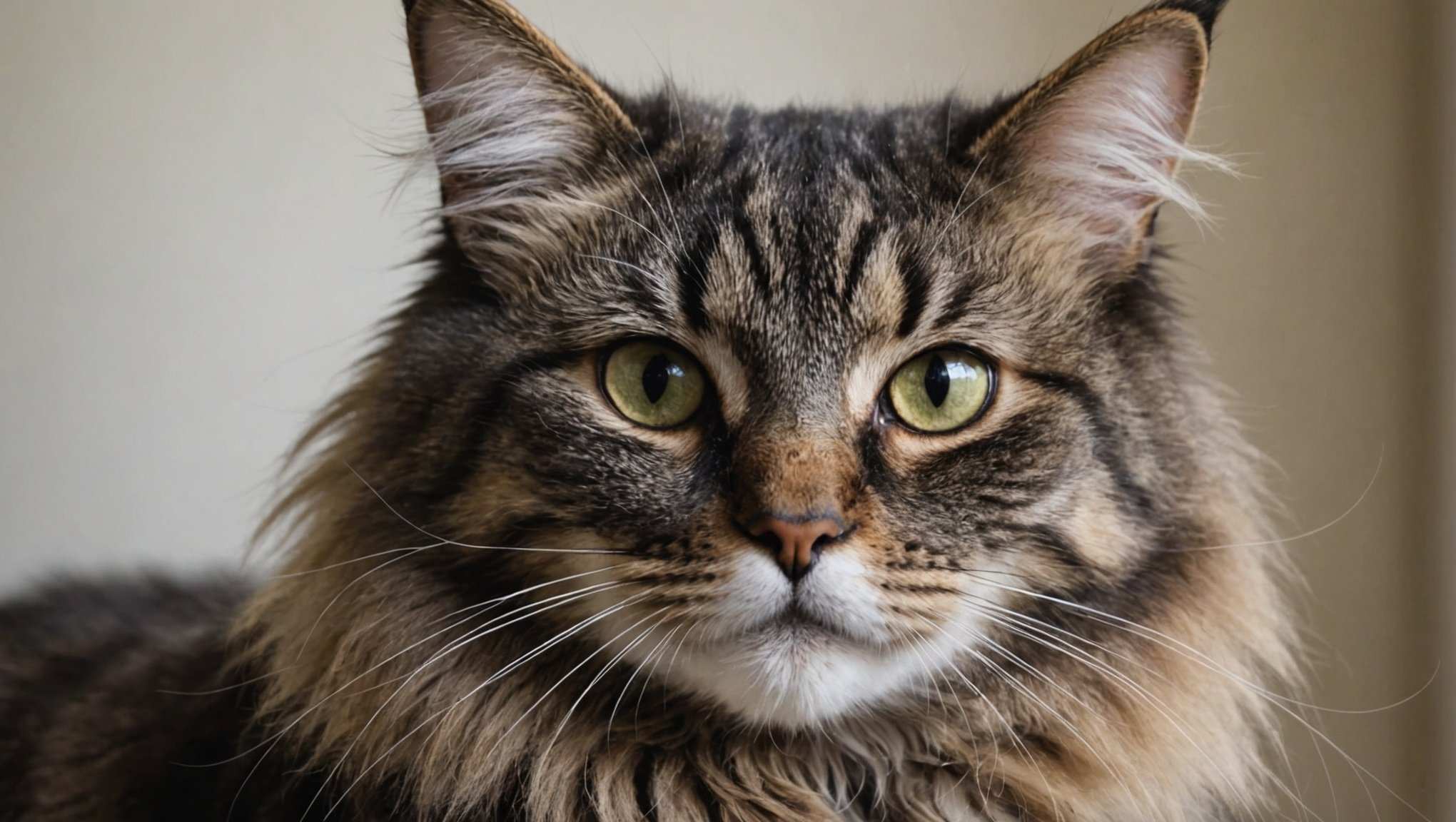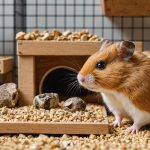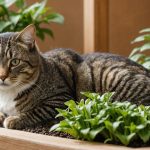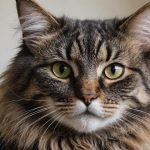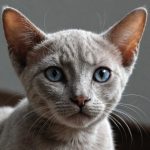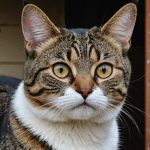Long-haired cats bring beauty and charm but also require diligent care to manage shedding. You may feel overwhelmed by fur-covered furniture and clothing, but effective strategies exist. This guide offers practical solutions tailored for pet parents, helping you maintain a cleaner home while keeping your feline companion happy and healthy. Discover essential grooming techniques, dietary tips, and innovative tools designed specifically for long-haired breeds. It’s time to reclaim your space without compromising your cat’s well-being!
Understanding Shedding in Long-Haired Cats
Exploring the intricacies of feline fur loss.
Sujet a lire : Essential Tips for Choosing the Perfect Shelter Cat: Create a Lasting Bond
Common Reasons for Shedding in Long-Haired Cats
Long-haired cats are known for their luxurious coats, but with beauty comes the challenge of shedding. It's a natural process influenced by several factors. Cat coat health plays a crucial role; a diet lacking essential nutrients can lead to increased fur loss. Additionally, stress or changes in the environment may exacerbate shedding. Regular grooming helps manage this by removing loose hairs and distributing natural oils, promoting a healthier coat.
The Impact of Seasonal Changes on Shedding
Seasonal changes significantly affect shedding patterns in long-haired cats. As temperatures rise in spring and summer, cats typically shed more to adjust their coats for warmer weather. This natural cycle helps regulate body temperature. Conversely, in autumn and winter, cats may grow thicker coats, resulting in less shedding. Being aware of these patterns can help cat owners better prepare and manage their pet's grooming needs.
A lire également : Essential Care Tips and Best Practices for Nurturing Hairless Breeds Like the Bambino Cat
Health Conditions That May Increase Shedding
Certain health conditions can lead to excessive shedding in long-haired cats. Allergies, skin infections, and parasites like fleas can irritate the skin, causing more fur to fall out. Hormonal imbalances or thyroid issues might also contribute to abnormal shedding. Regular veterinary check-ups are essential to diagnose and address these potential problems, ensuring your cat's coat remains healthy.
Key Factors Influencing Shedding:
- Nutritional deficiencies
- Stress and environmental changes
- Seasonal variations
- Health conditions such as allergies and infections
Understanding these aspects can help cat owners provide better care, ensuring their feline companions maintain a healthy and beautiful coat.
Effective Grooming Techniques
Mastering the art of grooming ensures a healthy and stunning coat for your long-haired feline.
Recommended Grooming Frequency for Long-Haired Cats
Long-haired cats require a consistent grooming routine to manage their luxurious coats effectively. Brushing should be done at least three to four times a week to prevent tangles and mats, which can lead to skin irritation. Regular grooming not only reduces shedding but also strengthens the bond between you and your pet. This frequency helps maintain coat health by removing loose hairs and distributing natural oils.
Best Brushing Techniques to Minimize Shedding
Employing the right brushing techniques is crucial in minimizing shedding. Start by using a wide-toothed comb to gently detangle any knots. Follow this with a slicker brush to remove loose fur and dander. For a finishing touch, a bristle brush can help smooth the coat and enhance its shine. Remember to be gentle, as long-haired cats have sensitive skin that can be easily irritated by rough handling.
Importance of Regular Grooming for Coat Health
Regular grooming is essential for the overall coat health of long-haired cats. It helps prevent the accumulation of dirt and debris, reducing the risk of skin infections. Additionally, grooming allows you to monitor for any signs of health issues, such as unusual lumps or skin conditions. By maintaining a consistent grooming schedule, you can ensure your cat's coat remains vibrant and healthy.
Key Grooming Tools:
- Wide-toothed comb
- Slicker brush
- Bristle brush
By adopting these effective grooming techniques, you can significantly reduce shedding and enhance your cat's coat health, ensuring your long-haired companion looks and feels their best.
Tools and Products for Shedding Control
Exploring the essential tools to manage and reduce shedding in long-haired cats.
Types of Brushes and Combs
When it comes to controlling shedding in long-haired cats, choosing the right cat grooming tools is crucial. Brushes and combs come in various types, each serving a specific purpose. A slicker brush is excellent for removing loose fur and preventing mats, while a wide-toothed comb helps detangle knots without pulling on sensitive skin. Additionally, a bristle brush can be used to smooth the coat and distribute natural oils, promoting a healthy shine.
De-shedding Tools
For more intensive shedding control, de-shedding tools are highly recommended. These tools are designed to reach beneath the topcoat and remove loose undercoat hair effectively. A popular choice is the de-shedding rake, which is particularly beneficial for long-haired breeds. It helps minimize shedding by reducing the amount of loose fur that would otherwise end up around your home. Regular use of de-shedding tools can significantly reduce the amount of hair shed.
Other Grooming Accessories
Beyond brushes and de-shedding tools, other grooming accessories can support coat maintenance. Grooming gloves, for instance, allow you to gently remove loose fur while petting your cat, making the process enjoyable for both parties. Additionally, a grooming mat provides a comfortable space for grooming sessions, helping to keep your cat relaxed. These accessories, combined with the right grooming tools, can make a substantial difference in managing shedding.
Key Grooming Tools:
- Slicker brush
- Wide-toothed comb
- Bristle brush
- De-shedding rake
- Grooming gloves
By incorporating these tools and products into your routine, you can effectively manage shedding and ensure your long-haired cat's coat remains healthy and beautiful.
Dietary Considerations for Healthy Coats
Ensuring a well-balanced diet for optimal fur health in long-haired cats.
Key Nutrients That Promote a Healthy Coat
A well-rounded cat diet is crucial for maintaining a healthy coat, especially for long-haired breeds. Essential nutrients play a pivotal role in supporting fur health. Proteins, particularly those rich in amino acids, are vital as they form the building blocks of hair. Omega-3 and Omega-6 fatty acids are also essential; they help maintain skin health and reduce inflammation, ultimately contributing to a shiny, robust coat. Vitamins such as A, E, and B-complex further enhance coat quality by promoting cell growth and repair.
Recommended Diets for Long-Haired Cats
Long-haired cats benefit significantly from diets specifically formulated to support their unique grooming needs. A diet rich in high-quality proteins and fatty acids can help minimize shedding and improve overall fur health. Look for cat foods that list real meat as the primary ingredient, ensuring an adequate supply of essential nutrients. Grain-free options can also be beneficial, as they often reduce allergic reactions that might lead to excessive shedding. Incorporating wet food can help keep your cat hydrated, which is crucial for maintaining a healthy coat.
Role of Supplements in Reducing Shedding
In addition to a balanced diet, certain supplements can further aid in reducing shedding. Fish oil supplements are a popular choice due to their high content of Omega-3 fatty acids, which enhance fur health by reducing skin inflammation and promoting a glossy coat. Biotin supplements can also be beneficial, as they support keratin production, essential for strong and healthy hair. Always consult with a veterinarian before introducing any new supplements to ensure they are appropriate for your cat's specific dietary needs.
Key Dietary Elements for Fur Health:
- High-quality proteins
- Omega-3 and Omega-6 fatty acids
- Vitamins A, E, and B-complex
- Fish oil supplements
- Biotin supplements
By focusing on these dietary considerations, cat owners can significantly improve their pet's coat health and reduce unwanted shedding, ensuring their long-haired companions remain healthy and vibrant.
Environmental Factors Influencing Shedding
Exploring the impact of indoor conditions on your cat's coat.
How Indoor Conditions Affect Shedding in Long-Haired Cats
The cat living environment plays a significant role in influencing shedding patterns, particularly for long-haired breeds. Indoor conditions such as temperature, humidity, and air quality can directly affect your cat's coat health. For instance, low humidity levels can lead to dry skin, increasing fur loss. Maintaining an optimal indoor climate, with balanced humidity and temperature, can help mitigate these effects and promote a healthier coat.
Importance of a Stress-Free Environment
Stress is a notable factor affecting shedding in long-haired cats. Changes in the cat living environment, such as the introduction of new pets or alterations in routine, can elevate stress levels, leading to increased shedding. Creating a stable and stress-free environment is crucial. Providing hiding spots, regular playtime, and a consistent routine can help reduce stress and its impact on your cat's coat.
Tips for Maintaining a Comfortable Living Space
To ensure your indoor cat care routine supports a healthy coat, consider these tips:
- Humidity Control: Use a humidifier to maintain optimal humidity levels, preventing dry skin.
- Air Quality: Ensure good ventilation and consider air purifiers to reduce allergens.
- Routine Stability: Keep feeding and playtime schedules consistent to minimize stress.
By paying attention to these environmental factors, you can significantly influence your long-haired cat's shedding patterns and overall coat health. A well-maintained cat living environment is essential for reducing stress and promoting a vibrant, healthy coat.
FAQs About Shedding in Long-Haired Cats
Uncovering truths and dispelling myths about cat shedding.
Addressing Common Myths About Cat Shedding
Cat shedding often leads to misconceptions that can confuse pet owners. One myth suggests that bathing a cat frequently will reduce shedding. However, excessive bathing can strip natural oils, worsening fur health. Another common belief is that feeding cats a high-fat diet will minimize shedding. In reality, a balanced diet with essential nutrients is more effective in promoting a healthy coat.
Frequently Asked Questions from Pet Parents
Pet parents frequently ask about the best ways to manage shedding. A common question is whether certain breeds shed less. While some breeds may shed less due to their coat type, all long-haired cats will shed to some extent. Owners also wonder if shedding indicates a health issue. While shedding is natural, excessive fur loss can signal underlying health problems, necessitating a veterinary consultation.
Expert Answers and Advice on Managing Shedding
Experts recommend regular grooming as a primary strategy to control cat shedding. Using the right tools, such as a slicker brush or de-shedding rake, can effectively reduce loose fur. Additionally, maintaining a stress-free environment and providing a nutrient-rich diet are crucial in managing shedding. Here’s a quick checklist to help manage shedding:
- Regular Grooming: Use appropriate brushes and combs.
- Balanced Diet: Ensure essential nutrients are included.
- Stress Management: Create a stable and comfortable environment.
By debunking myths and addressing common concerns, cat owners can better manage shedding and ensure their long-haired cats maintain a vibrant, healthy coat.
Testimonials and Case Studies
Exploring real-life success stories from cat owners.
Real-Life Examples of Effective Shedding Management
Cat owners often share their experiences and strategies for managing shedding in long-haired breeds. One owner, Sarah, found success by incorporating a de-shedding rake into her grooming routine. She noticed a significant reduction in loose fur around the house, attributing this to the tool's ability to reach the undercoat. Another cat parent, Mark, emphasized the importance of a balanced diet. After switching to a grain-free formula rich in Omega-3 and Omega-6 fatty acids, he observed a shinier coat and less shedding.
Insights from Pet Parents on Grooming Strategies
Grooming strategies vary among cat owners, but some common practices have proven effective. Many recommend establishing a consistent grooming schedule, using tools like a slicker brush and wide-toothed comb. These tools help prevent mats and tangles, which can exacerbate shedding. A cat owner named Lisa shared her approach: "Regular grooming not only keeps my cat's coat healthy but also strengthens our bond. It's a time we both enjoy."
Success Stories Highlighting the Impact of Dietary Changes and Grooming Tools
The combination of dietary changes and the right grooming tools has led to numerous success stories. A cat owner named Alex noted a marked difference after introducing fish oil supplements to his pet's diet. The supplements, rich in essential fatty acids, contributed to a healthier coat and reduced shedding. Additionally, using a bristle brush for finishing touches ensured a smooth, shiny coat. These strategies, as reported by various cat owners, underscore the importance of a holistic approach in managing shedding.
Key Takeaways from Cat Owners:
- De-shedding rake for undercoat management
- Balanced diet with Omega-3 and Omega-6 fatty acids
- Regular use of slicker brush and wide-toothed comb
- Incorporation of fish oil supplements
These testimonials and insights from pet parents highlight practical solutions and the positive impact of effective shedding management strategies.

